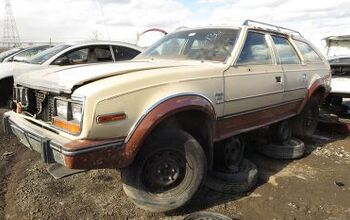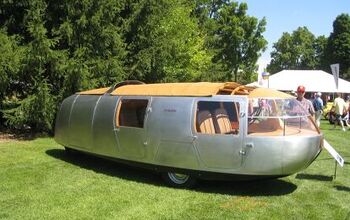Saab Was Way Ahead Of Its Time

So I’m driving along the other day and I notice a badge on the tailgate of the latest Lincoln Navigator that says “EcoBoost.”
That’s right, folks: the giant, bold, shout-out-loud Lincoln Navigator is now using an EcoBoost engine. The V-8 is gone. The big, brawny, “look at me” V-8 rumble has disappeared. Lincoln has now dropped that stuff in favor of turbocharging.
It would be one thing if it were the MKZ, which is a midsize sedan that looks sort of like a woman’s shoe turned upside down. That thing is turbocharged, and nobody really seems to care. It’s just another car, in a sea of cars, looking to eek out the best possible fuel economy.
But the Navigator! The giant, truck-like Navigator. Lincoln’s answer to the Cadillac Escalade, even though it debuted before there was a Cadillac Escalade. The huge flagship model of the Lincoln lineup; something Lincoln drivers across the world aspire to own, from airport limousine drivers to Lincoln dealership owner spouses. It’s now turbocharged.
And, of course, the Navigator isn’t the only recent luxury car to include a turbocharger. Other turbocharged luxury cars that have debuted in modern years include, well, basically all of them. Lexus, once the champion of smooth engines with low power and big displacement, now has a turbocharged NX and IS. Mercedes has all sorts of turbos. And Audi’s entire lineup might be turbocharged, for all I know. I cannot be sure of this fact because it’s impossible to spend more than 10 minutes on the Audi website without falling asleep.
It wasn’t always this way. Years ago, Mercedes brought us two types of engines: naturally aspirated engines and bigger naturally aspirated engines. Lincoln and Cadillac gave us V-8s. And Lexus offered Toyota engines that inexplicably ran on premium fuel, even when the Toyota version had no problem with regular. It was a great time.
Actually, it’s a great time now, too, because turbocharged engines are kind of fun. I especially like turbocharged engines from the mid-2000s because of how they operated. First, you put your foot down. Then, you did your taxes. Then, you were launched into a hedge somewhere in the next area code.
And this brings me to the point of today’s column, which is that Saab was way ahead of its time.
Many of you think of Saab as a fledgling Swedish automaker who had just one or two distinguishable products and could only afford to redesign its vehicles every decade or so. Of course, many of you think of Volvo in the same way. But Saab was like that, too.
But Saab’s biggest unique trait — more than its three-spoke wheels, more than its hatchback designs, more than the fact that the Saab logo faded off its emblems after three weeks of driving around in regular sunlight — was turbocharged engines.
Do you remember this? Back in the 1990s and 2000s, Mercedes-Benz and BMW and Lincoln and Cadillac and Lexus and Acura were all using big ol’ naturally-aspirated engines; the kind of engine where you’d walk up to your neighbor at a party and proudly announce your displacement like you’d share your newborn daughter’s weight at birth. My Acura has a three point five, you’d say, knowing full well your neighbor’s Lexus was only a pathetic three point oh. Or: My Cadillac has a four point nine. Or: My Mercedes has a five point six.
All of these things were acceptable to say back in the day when displacement ruled the earth.
And then there was Saab, off in the corner, somehow extracting even more power than its rivals but with far less fuel engine size. Whaddya got there, a neighbor would say, proudly stroking his new 4.0-liter, V-8-powered Lexus LS400. A two point three? And then he’d run away laughing as if his great dane had just put your entire Pomeranian in its mouth and gnawed on it a bit like a corn cob.
What he didn’t know, of course, is that your puny little two-point-three had 250 horsepower, or maybe 280, a function of Saab’s basic idea at the time that by God, there are a lot of horses running around Trollhattan, and they need to be captured and stuffed inside front-wheel drive sedans. Back then, that was considered unorthodox. Weird. Strange. Odd. “A turbocharger?” people would say. “What the hell is that?”
But now…
Well, now Saab is dead. Unfortunately, its ideas live on in virtually all modern cars: turbochargers are good. Smaller engines are great. Fuel economy is nice. Aerodynamics are fun. And as I look at today’s crop of luxurious front-wheel drive two point threes and two point ohs, and turbocharged this and EcoBoost that, I can’t help but think one thing: the only thing separating these cars from a Saab is the faded emblem.

More by Doug DeMuro
Latest Car Reviews
Read moreLatest Product Reviews
Read moreRecent Comments
- Probert They already have hybrids, but these won't ever be them as they are built on the modular E-GMP skateboard.
- Justin You guys still looking for that sportbak? I just saw one on the Facebook marketplace in Arizona
- 28-Cars-Later I cannot remember what happens now, but there are whiteblocks in this period which develop a "tick" like sound which indicates they are toast (maybe head gasket?). Ten or so years ago I looked at an '03 or '04 S60 (I forget why) and I brought my Volvo indy along to tell me if it was worth my time - it ticked and that's when I learned this. This XC90 is probably worth about $300 as it sits, not kidding, and it will cost you conservatively $2500 for an engine swap (all the ones I see on car-part.com have north of 130K miles starting at $1,100 and that's not including freight to a shop, shop labor, other internals to do such as timing belt while engine out etc).
- 28-Cars-Later Ford reported it lost $132,000 for each of its 10,000 electric vehicles sold in the first quarter of 2024, according to CNN. The sales were down 20 percent from the first quarter of 2023 and would “drag down earnings for the company overall.”The losses include “hundreds of millions being spent on research and development of the next generation of EVs for Ford. Those investments are years away from paying off.” [if they ever are recouped] Ford is the only major carmaker breaking out EV numbers by themselves. But other marques likely suffer similar losses. https://www.zerohedge.com/political/fords-120000-loss-vehicle-shows-california-ev-goals-are-impossible Given these facts, how did Tesla ever produce anything in volume let alone profit?
- AZFelix Let's forego all of this dilly-dallying with autonomous cars and cut right to the chase and the only real solution.


































Comments
Join the conversation
This article said little as far as a decent point. And the fact that people would get around and talk about the displacement of their luxury cars seems highly debatable to me.
No, you wouldn't. You wouldn't mention displacement. You'd say it's a turbo. Blown. Like your wife, girlfriend won't do for you. Especially if he's a tool. That would shut him up and wipe the smile off his face. "Whaddya got there, a neighbor would say, proudly stroking his new 4.0-liter, V-8-powered Lexus LS400. A two point three? And then he’d run away laughing as if his great dane had just put your entire Pomeranian in its mouth and gnawed on it a bit like a corn cob."